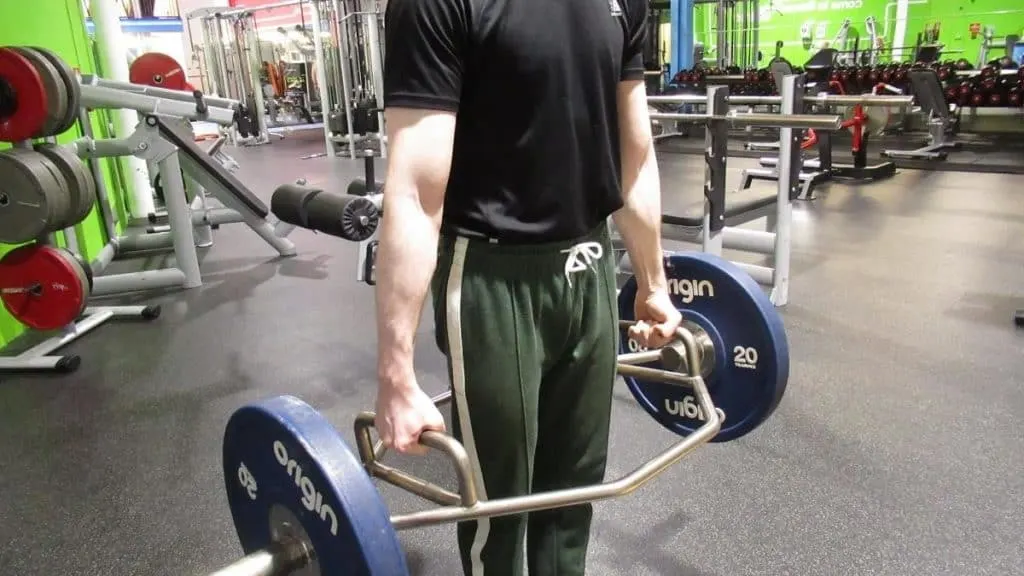I know, I know, you want those big “baseball forearms” that give you extra legitimacy on the field. But do you really need to perform a specific baseball forearm workout to develop a powerful swing?
The answer, as is often the case, depends. But I’m not going to leave you hanging. As you’ll soon learn, forearm workouts for baseball can be a game-changer if you do them correctly.
Related forearm/baseball guides
Are the forearms important for baseball?

The forearm bones and surrounding muscles are undeniably important for baseball because they help you to hold onto the bat. Think about. All else being equal, do you think the guy with big forearms is going to have a worse swing than the fella with toothpick lower arms?
No, he’s not.
And while the science doesn’t seem to be able to decide either way, if I was a baseball player, I wouldn’t leave things down to chance. Training your forearms with baseball-specific drills certainly isn’t going to hurt (unless you use poor form), so you might as well do it.
At the very least, you need control over your wrist and hands during baseball. You might not need bodybuilder caliber forearms, but they do need to be strong and functional.
How do baseball players get big forearms?

We’ve all seen those players with massive forearms and instantly wished that we could have them too. So much so, in fact, that getting “baseball forearms” has become a common goal among athletes.
The truth is, many of these guys are not only skillful, but they also have top-tier genetics to put on muscle mass.
Also, chances are if they’re professional, they’ve been lifting weights for years. In the same way that a manual laborer can get jacked forearms without training them directly in a gym, baseball players often have excellent forearm development from their general strength training.
If you do enough repetitions of deadlifts, pull-ups, and rows, your forearms are going to grow regardless of your genetics. But are compound lifts really enough?
More on that in just a sec.
Sample baseball forearm workout

This sample baseball forearm workout is best done 1-2 times per week at the end of your main gym activities. Avoid doing it first in the session because it will decrease your grip strength (acutely not chronically), which is essential to a whole host of other exercises.
1: Plate pinch — 3 sets of 30 seconds (grip endurance)
2: Hand grip squeezes — 2-3 sets of 10 reps (grip strength)
3: Bat rotations —2-3 sets of 15 reps per arm (rotational strength)
4: EZ curl bar wrist curls —2 sets of 12-15 reps (forearm flexor size)
5: Dumbbell reverse wrist curl —2 sets of 20-30 reps (forearm extensor strength)
Notice how we start the workout with grip training. That’s because lower arm size only matters in baseball insofar as it allows you to maintain a tight grip on the bat and move it quickly.
Also, feel free to do hand grip squeezes first if you want to work more on strength than endurance.
The traditional forearm curls are simply there to keep the wrists strong—and provide the extra muscle mass that we all secretly want.
As for the bat rotation drill, this is where you hold one end of a bat with an outstretched arm and a neutral hand position. Then, you rotate the bat until your hand is fully pronated. From there, you simply turn your hand back to the neutral position and repeat for 15 reps before moving onto the other arm.
Are compound exercises enough?

One of the most common reasons coaches advise against doing a specific baseball forearm workout is that your lower arms already get plenty of work dung compound lifts like deadlifts, barbell rows, and chin-ups.
And I would mostly agree. If we did isolation exercises for every little muscle group, we’d be living in the gym. Plus, we’d be far too tired to play baseball.
That’s why I only like doing isolation exercises that are necessary.
Still, doing the bat rotations and one grip exercise is an excellent way to cover your bases while making sure that your forearm training doesn’t interfere with your performance on the field.
Yet, if you’re more advanced or just can’t stand the thought of not having big forearms, then you can go ahead and do the wrist curl exercises from the sample routine. Or you can try the one arm dumbbell forearm curl. But for most players, grip and rotational movements will tick all the boxes (and add some size too).
Related posts
The verdict on baseball forearm workouts
Top baseball players and athletes in general know the significance of strength training for eliciting maximum performance. Yet, they also understand the importance of not taking things too far.
There’s a reason why bodybuilders aren’t baseball players despite having big forearms. Once you already have decently strong forearms, making them even bigger isn’t going to help your game. And who knows, if you get carried away with all the wrist curls, then you might even strain your joints.
So I say pick 1-2 grip exercises because they’ll help you hold the bar on other lifting movements. Also throw in some bat rotations if you or your coach feels that it might improve your swing.
References
- Szymanski, D. J., & DeRenne, C. (2010). The Effects of Small Muscle Training on Baseball Hitting Performance: A Brief Review. Strength and Conditioning Journal, 32(6), 99–108. https://doi.org/10.1519/ssc.0b013e3181fda2da
- Clark, Z. (2019, May 10). 15 Baseball Exercises MLB Players Actually Do. STACK. https://www.stack.com/a/top-baseball-exercises
- What Is The Best Workout Program For Baseball Players? (2019, January 23). Bodybuilding.Com. https://www.bodybuilding.com/fun/wotw69.htm

